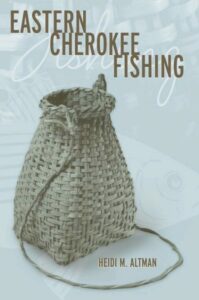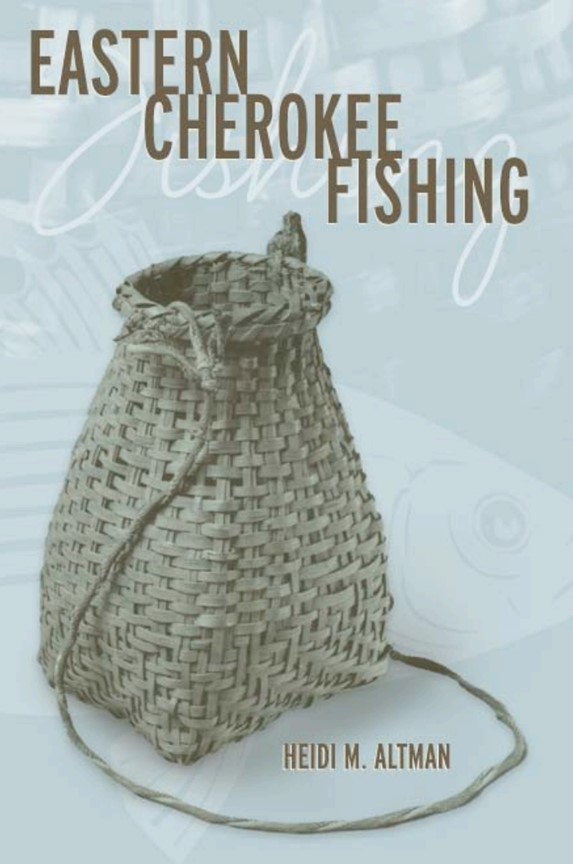Eastern Cherokee Fishing

Eastern Cherokee Fishing – Reminiscences and recollections of fishing have a certain reputation for being exaggerated and far-fetched, and so some might see them as a suitable topic for mythology and leave it at that.
However, I chose to begin this research by asking people about fishing experiences because ¤shing is a topic that people enjoy talking about, and thus it provides a stimulating basis for discussion, interaction, and study.
Talking to Cherokee and non-Cherokee people about fishing over the course of this project has resulted in a number of different types of information, ranging from linguistic data, such as discrete names for special, to culturally relevant texts about fishing cosmology, and the environment.
Thus, fishing has proven to be a rich channel through which to gain perspectives on the status of the Cherokee language, the vigor of the Cherokee system of native knowledge, and the history of the relationship between Cherokee people and the local environment.
In 1998, when I arrived in Cherokee, North Carolina, initially I was interested in working with the Eastern Band of Cherokee Indians (EBCI) specially to develop a language revitalization program. I was soon to discover, however, that the EBCI was involved in language planning already, and at that time I could not find a role for myself in the language program.
After spending time volunteering with the language program as much as I could, I began to look for another project that would combine my own interests in language revitalization, native knowledge systems, and ethnoecology.
During this time I also taught as an adjunct instructor at Western Carolina University and after consulting with WCU archaeologist Dr. Anne Rogers, I realized that there had never been a systematic examination of Cherokee fishing. I conducted some preliminary historical search and then began the process of applying to do the ethnographic portion of the project.
Today, it is difficult to imagine the town of Cherokee as some people remember it. One person I interviewed recalled attending the reservation boarding school because his home in Big Cove was more than a day’s walk to town. Today, it is possible to drive that distance in about twenty minutes, depending on seasonal traffic and weather.
A younger person recalled as a child splitting wood for his aunt who cooked on a wood-¤red stove as recently as the mid-1970s. While reminiscences of life events are an enjoyable avenue for discussion, a major consideration in conducting the ethnographic interviews was that most people alive during the time frame of this research—1999 to 2002—who practiced traditional fishing methods did so in their childhoods, Fifty, sixty or more years earlier.
Thus, the limits of memory and the difficulties of recollection have had a certain effect on this work. However, no one had any difficulty remembering the modern-day methods, and almost everyone I interviewed reported ¤shing recently with rod and reel.
Fishing expeditions were arranged, when possible, with people who reported knowledge and experience with traditional methods so that I could observe some of the older fishing practices and some of the modern-day practices as well.
An obstacle to practicing the traditional methods, however, is that many of them are now against the law in most locations. Fish poisoning, the use of weirs and traps, and any other restriction of waterways is against state law, and the tribal Department of Fish and Game maintains this regulation in tribal enterprise waters as well.
Tribal enterprise waters are those areas of the rivers that are regulated by the tribe itself as a part of the tourist economy and which are regularly stocked with trout as part of its fishery program.
There are areas of the rivers on the Qualla Boundary that are outside of the tribal enterprise waters, and in these areas enrolled members may fish as they like. Many of the traditional methods are also physically strenuous and present quite a challenge because in the areas where they are legal, the waters are cold and swift, rocks slippery, and hillsides steep.
Much less physically challenging were directed elicitation sessions, during which respondents were asked the names of specific fish while viewing pictures of different fishes in a guide or on a laptop computer.
Pictures of individual fish were also made into laminated cards so that the person being interviewed could look at them closely and use them for sorting. Audio and sometimes video recordings were made of these sessions.
The tapes were transcribed, and tables were made of the data. These tables (see Appendixes 3 and 4) show the relationships among scientific names, Cherokee names given by individual native speakers in this study, Cherokee names according to historical documents, and local English vernacular names for fish. Difficulties encountered in employing this method included the variability of the quality of photos of fish (even in Identicator guides), the variability in the appearance of fishes during and after spawning, the resemblances between closely related species, and the specificity of the locations most people on the Qualla Boundary fish.
In very specific locations it is difficult to pin down exactly which fish may be encountered while fishing. For example, elder guides often offer generalized maps of habitats and ranges that do not always take into account the differences between such conditions as enterprise vs. non-enterprise waters.
154 Pages of Awesome Specific Details on Eastern Cherokee Fishing
DOWNLOAD YOUR COPY NOW $9.95

Click on the Red Button Below for Instant Access!
We keep our subscriber’s privacy sacred. We do not sell or rent your personal information to other parties. What’s more you can always unsubscribe at any time!
Regards, Coyalita
Copyright © 2021-2023 1-Stop-Sporting-Goods.com All Rights Reserved Privacy Policy – Earnings Disclaimer – Terms of Use – Contact Us
